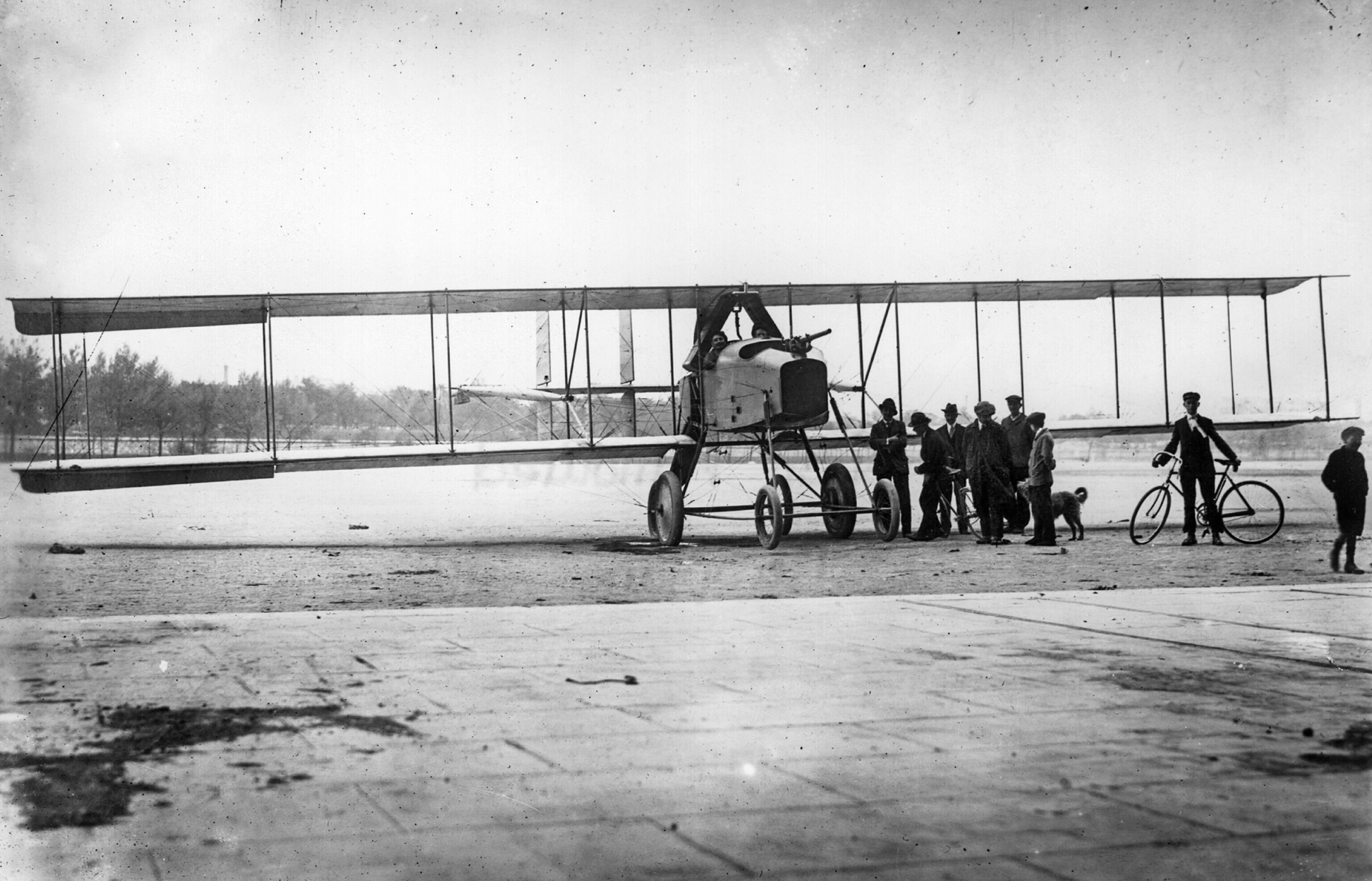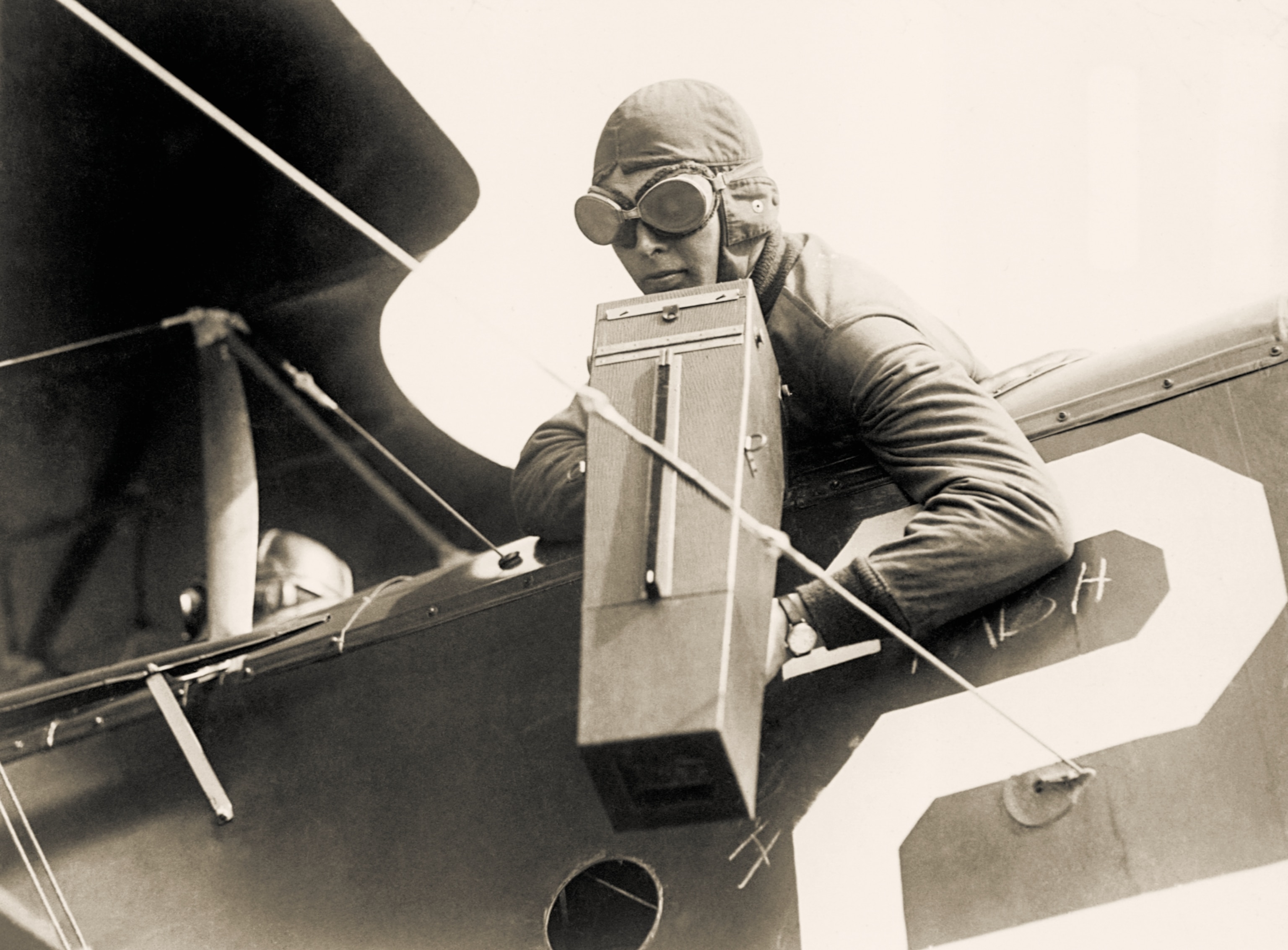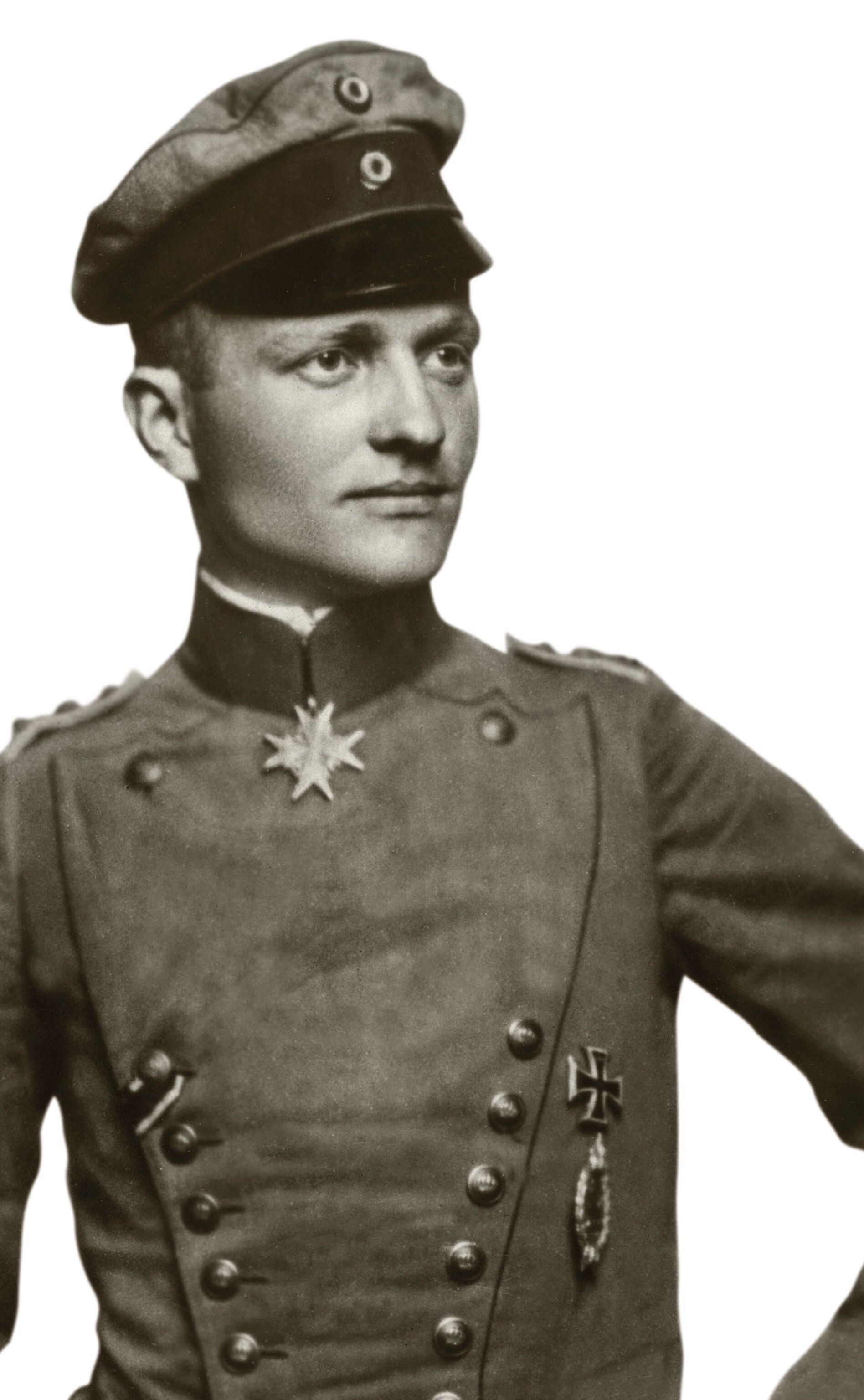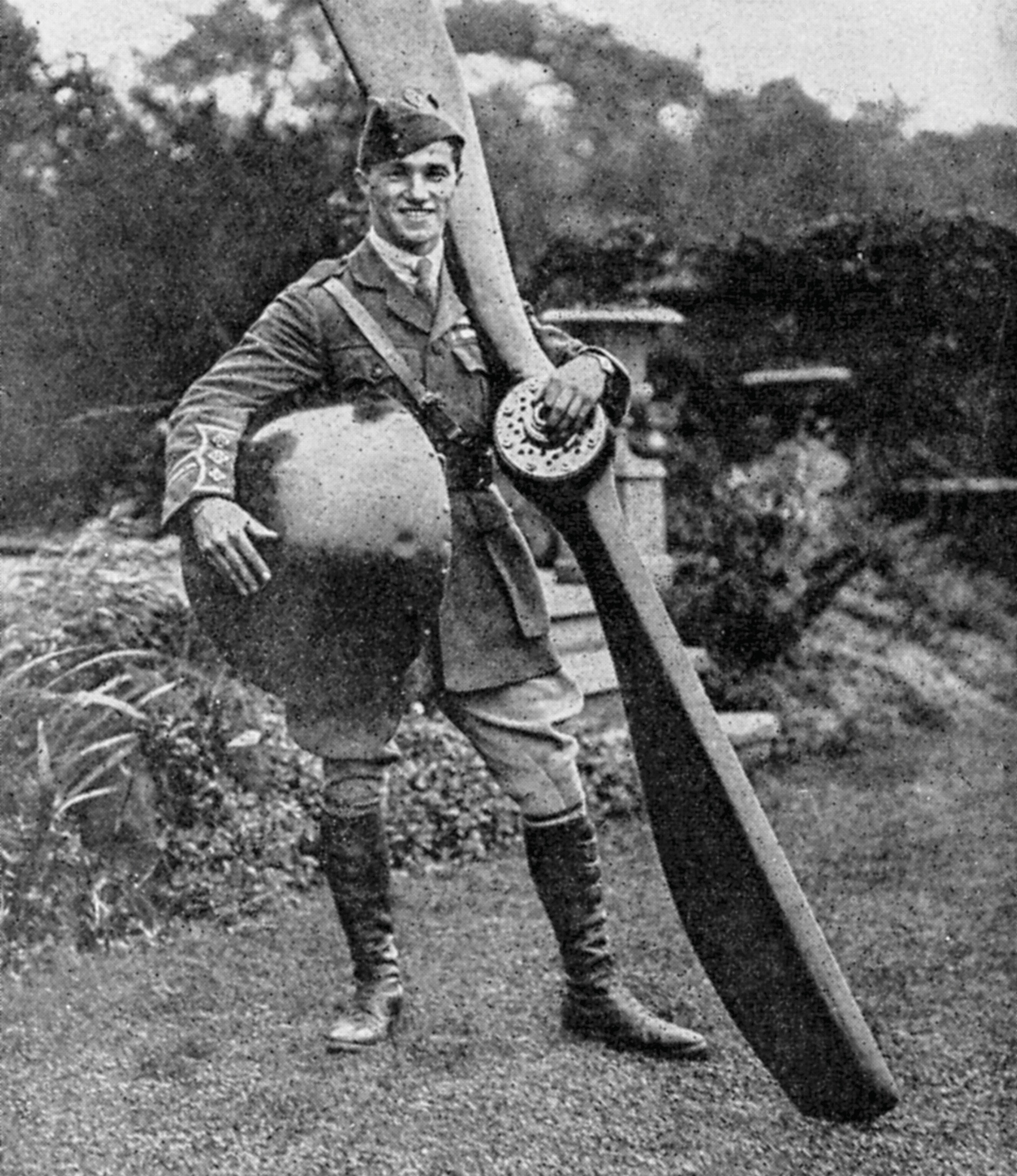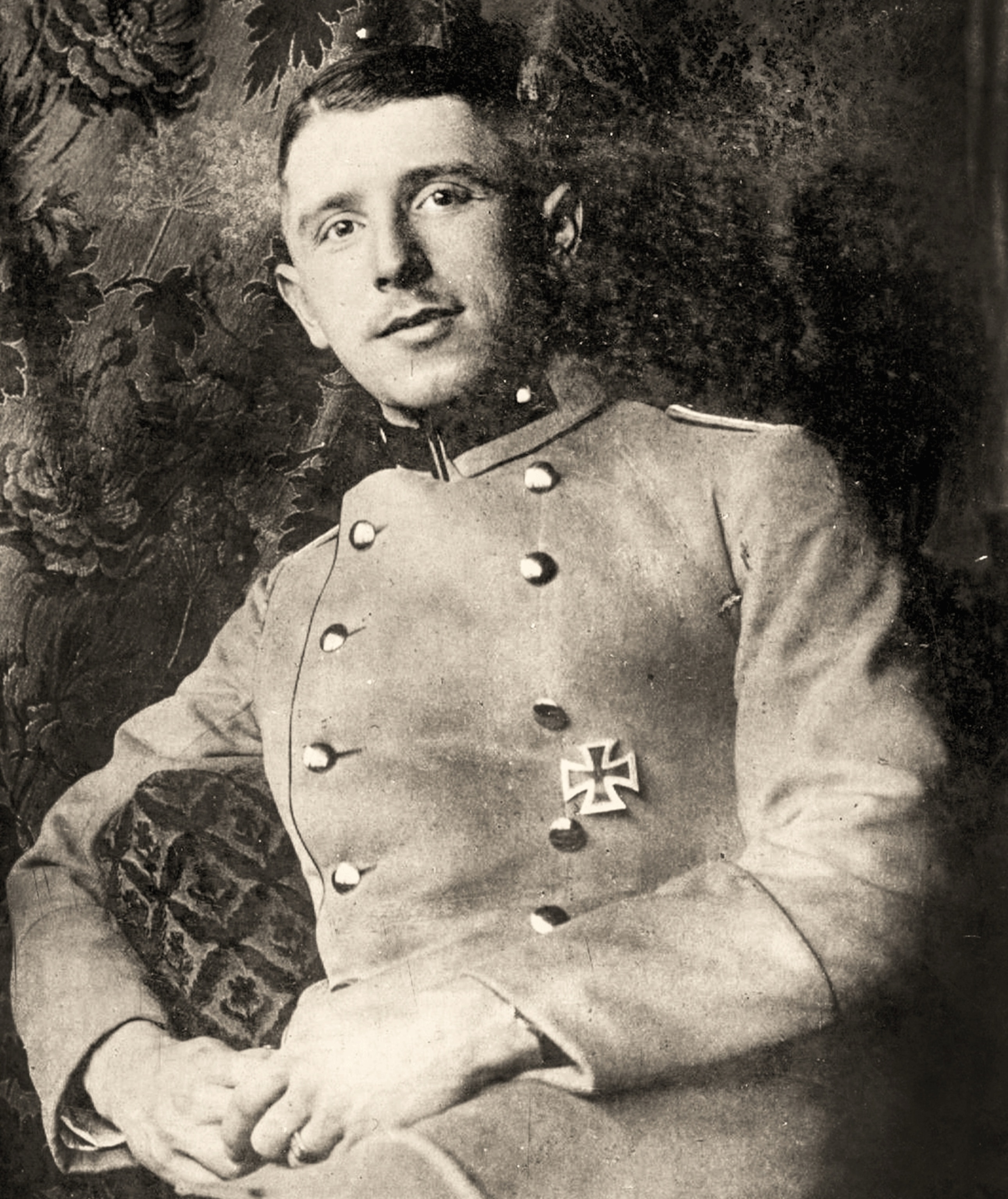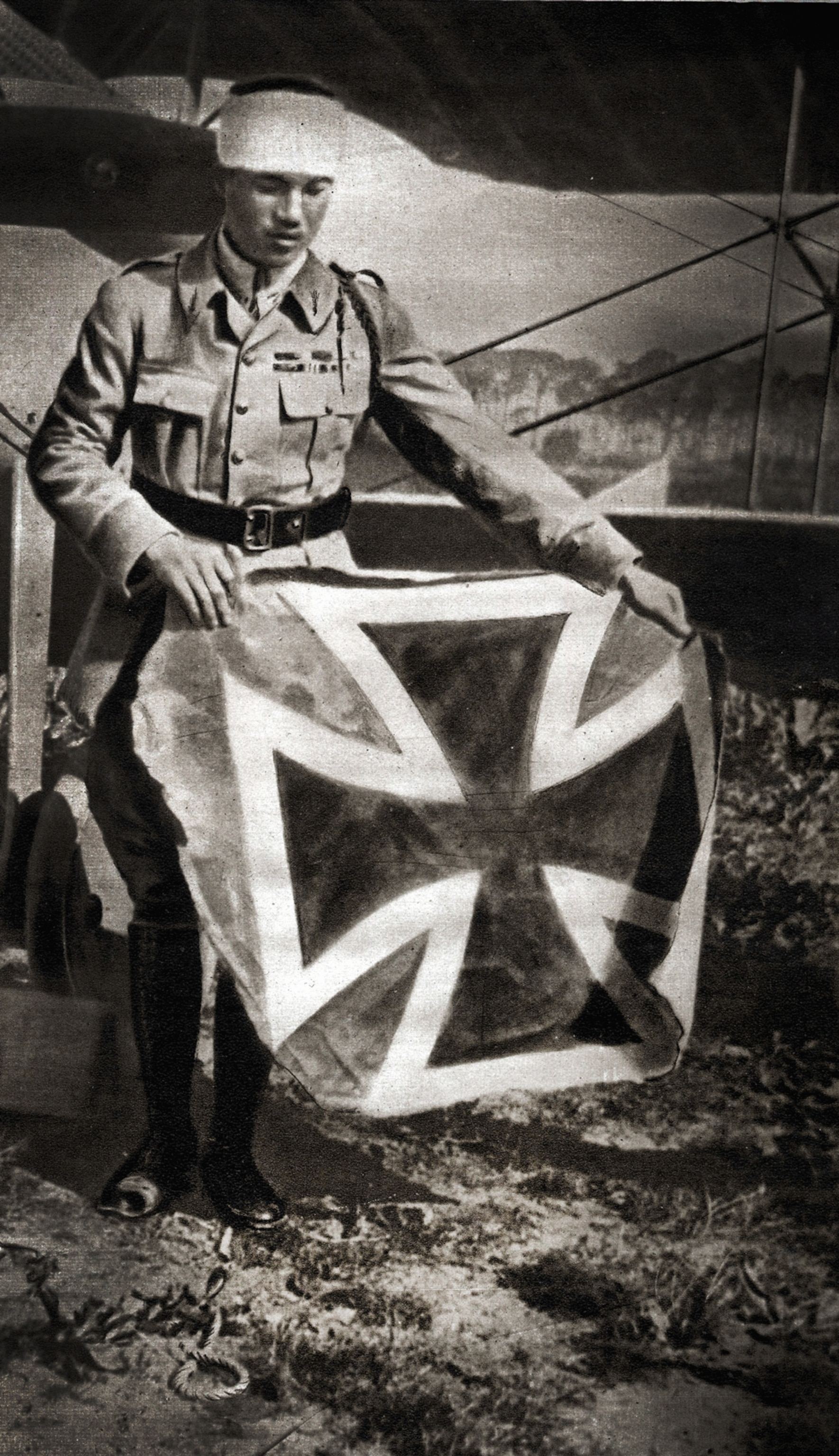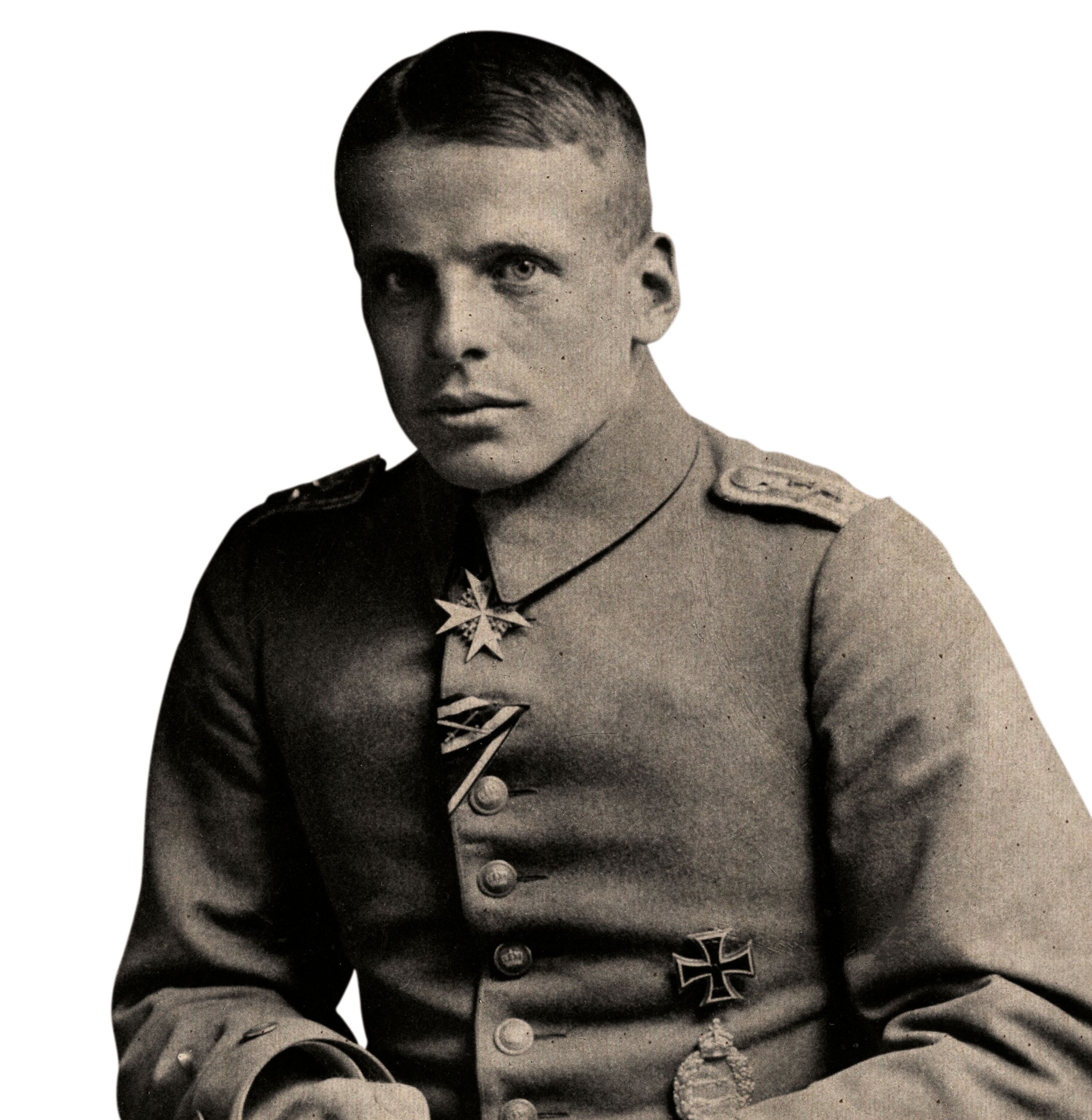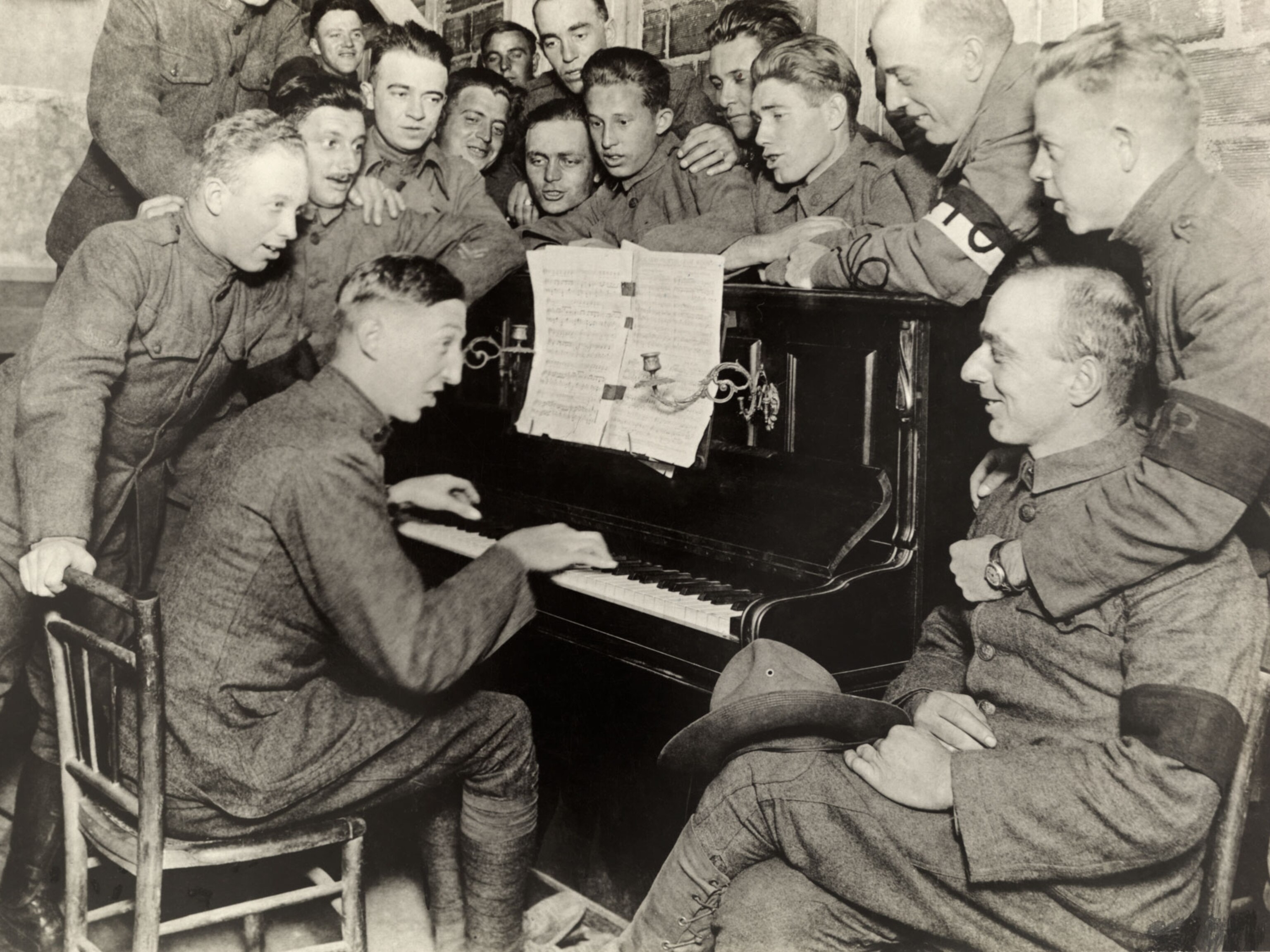Top guns of World War I
Combat aviation was born in the skies over Europe, as daring pilots learned how to dogfight on the fly during World War I.

October 5, 1914, seemed like an ordinary day for pilot Sgt. Joseph Frantz and observer Cpl. Louis Quénault. The two Frenchmen were flying near Reims, northern France, on board a Voisin 3 biplane. The very fact that they were airborne at all was a miracle, since little more than a decade had passed since the Wright brothers made their first manned flight near Kitty Hawk, North Carolina.
In the first months of World War I airplanes had a narrow role in the military. Small and nimble, they were beginning to take over reconnaissance from the slow, unwieldy balloons that were still used as “eyes in the sky” to record enemy movements. Although the early aviators took rifles aloft and occasionally fired at enemy planes, few envisioned them taking on a true combat role at this stage in the war.

But change was in the air. Frantz’s French plane was one of the first to have a Hotchkiss machine gun mounted to a tripod on the cockpit. After detecting a German Aviatik flying close by, they approached the enemy plane and fired their machine gun. The recoil had an unsettling effect on the Voisin, but the French kept shooting. The Germans returned fire before their pilot was wounded. The German plane crashed to the ground—the first recorded air-to-air kill in history. The dogfight was born.
A brand-new front
At the beginning of the war in July 1914, there was no consensus among the belligerent powers as to how airplanes could be put to the best use. Some Western countries had fledgling air forces thanks to the efforts and the enthusiasm of early adopters. In France aviation had gained particularly widespread popularity in a very short time: Wilbur Wright’s 1908 flight demonstrations were highly popular there, and French national pride was boosted by Louis Blériot’s pioneering flight across the English Channel in 1909.
When the war began, the sky wasn’t seen as a possible front, much less one that could be as important as land and sea. In the military, air travel, often by balloon, was used for reconnaissance missions, so airplanes were first slotted into that role. The engines of these early planes were not very strong, and could typically only support the weight of two men: a pilot and an observer. (See also: These 9 airplanes transformed flight over the last century.)
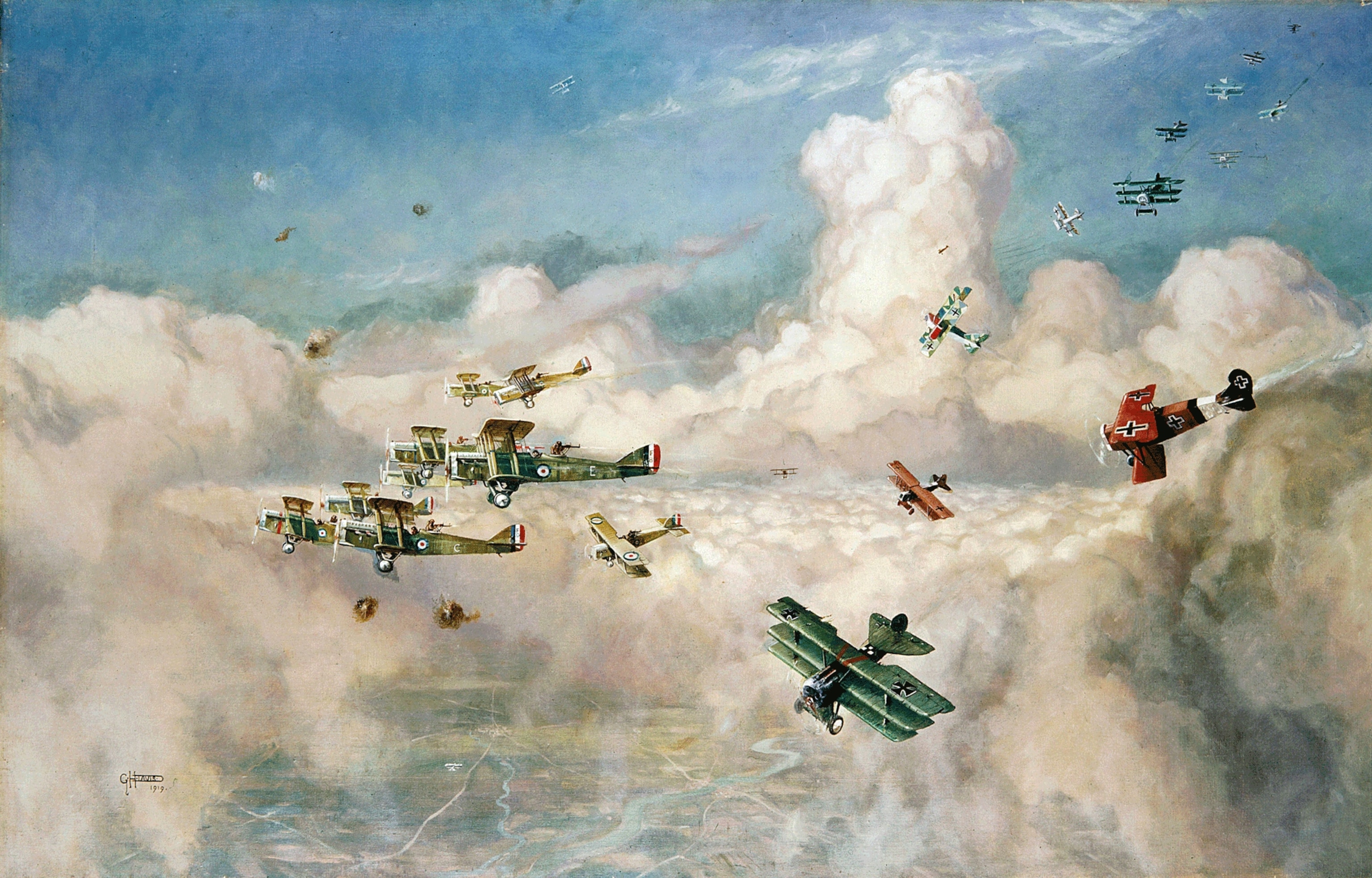
Navigation was also very basic, and getting lost was a real risk. Pilots would often—while in flight—have to page through maps or atlases to find their way. There are accounts of some pilots even resorting to swooping toward railroad stations to read the platform signs to orient themselves. These flights were also in danger from below. An initial lack of standardized identification led to some planes being fired upon by their own sides on the ground.
Often the observer was initially a cavalry officer who was experienced in traditional reconnaissance but who was unschooled in interpreting from an aerial perspective. At first, observations were recorded by hand in drawings. In time, advantages of aerial photography became clear, despite photographers having to juggle heavy box cameras in those rudimentary planes. Like aviation itself, this new technology took some time in getting recognized.
eyes in the skies
Early in the war, at the First Battle of the Marne on September 6-12, 1914, aviation demonstrated how useful it could be to armies on the ground. French and British pilots spotted vulnerabilities in the advancing German army. This intelligence helped their ground forces halt the Germans as they marched toward Paris.
Military strategists began to see how valuable the airplane’s ability to expose an enemy’s movements could be. They quickly learned that the ability to limit an enemy’s use of the sky could yield advantages for forces on the ground. The battle for supremacy on the ground would lead to battles for supremacy in the skies. Fighter planes emerged to meet this need, and airplanes would be involved in combat as well as intelligence. (See also: 5 advances that will change air travel.)
In early 1915, British military planners estimated they would need at least 50 squadrons—700 aircraft in total—to challenge Germany in the air. At the time, the Royal Flying Corps had only six squadrons in France. The situation was becoming increasingly worrisome to the Allies, and few in the top brass then were in doubt of the significance of aviation in the unfolding conflict.
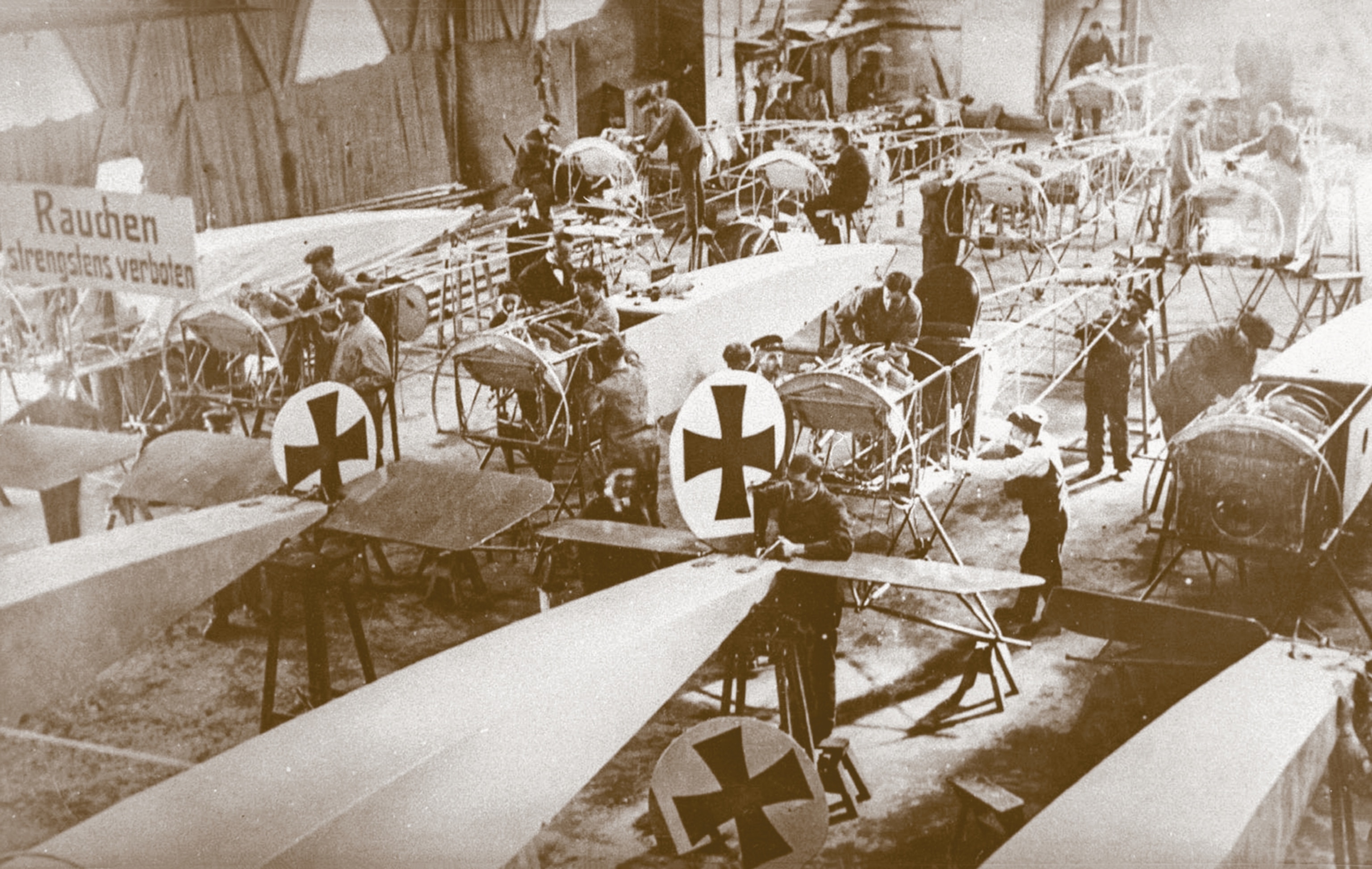
Flying and fighting
Some 50 different aircraft designs were produced during World War I, each model trying to improve on the last. Generally they were made of wood, reinforced with wire, and covered with a varnished fabric. The pilot’s seat was often placed above the fuel tanks. The landing gear was fixed, without shock absorbers, and not re- motely aerodynamic. At the outbreak of hostilities, most planes reached maximum speeds of about 70 miles an hour, and only later in the war were they able to exceed 100 miles an hour.
While in the air, pilots protected themselves against the elements with a variety of accessories. The first flying kits seemed better suited for mountaineering than flying. The initial leather caps were eventually replaced by rigid helmets that would offer more protection. They were usually accompanied by goggles to protect the eyes from the wind, even if this meant a considerable reduction in the pilot’s range of vision, and it wasn’t until the last stage of the war that they were equipped with shatterproof glasses. The body suit, leather helmets, and bomber jackets were completed with a thick fur coat.
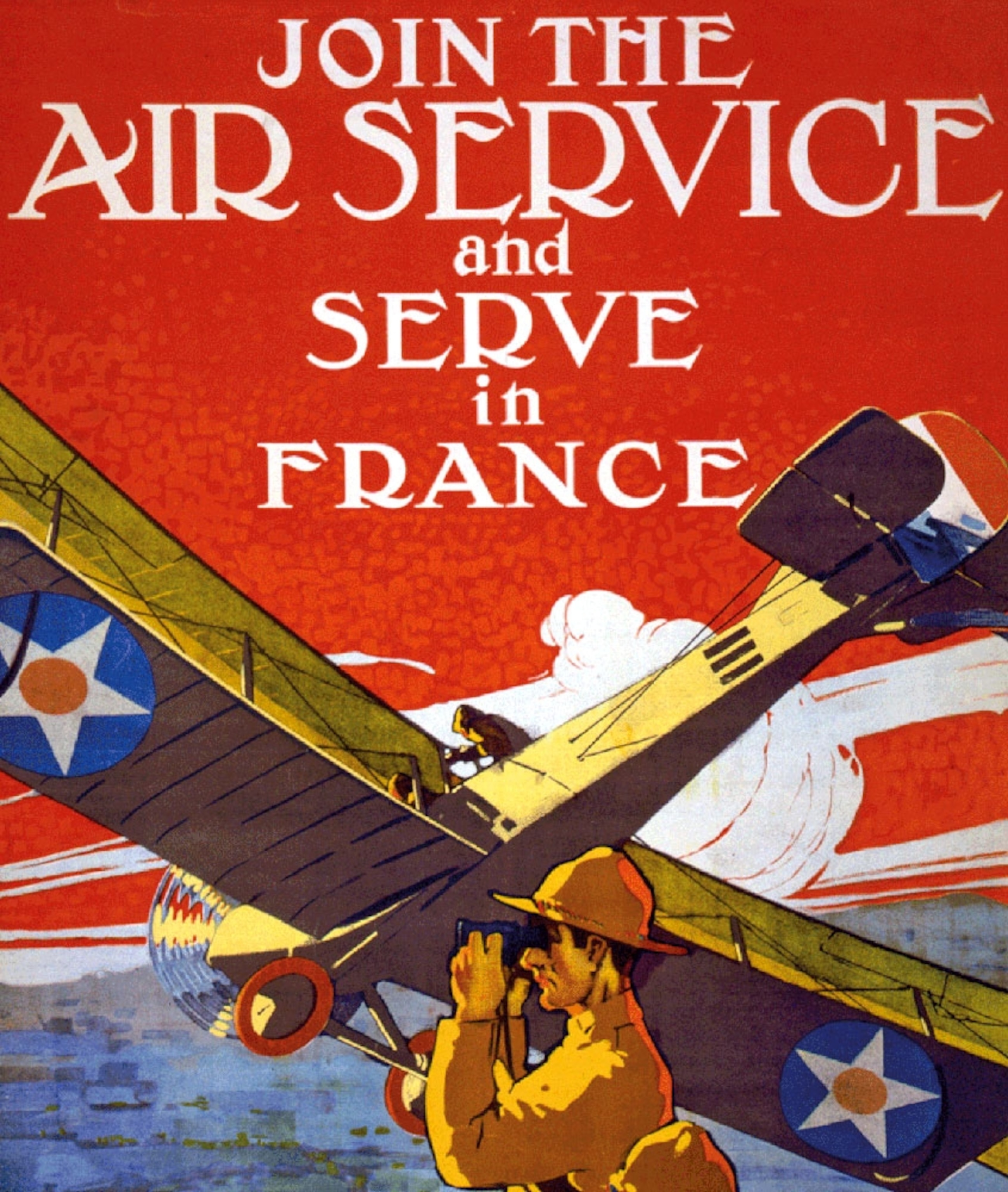
Planes with a propeller mounted behind the cockpit, like the French Voisin 3, were known as “pushers.” They gave the crew an unimpeded view from which to fire a stream of bullets but were not highly rated for maneuverability. Planes with a front-mounted propeller, known as “tractors,” allowed for much better flight conditions than pushers but greatly diminished line-of- sight fire.
Weapons systems were nonexistent when the war began. The earliest fighter pilots shot at each other with pistols, rifles, and even shotguns before machine guns became the standard weapon. The French Voisin 3 had a forward-mounted machine gun, and the British-made Vickers F.B.5 Gunbus, which entered action in 1915, featured one as well. Bolting a machine gun to the plane not only added a more reliable weapon, it also added complexity to combat. The tractor configuration had better aerial performance than the pushers, but the forward location of the propeller increased the likelihood of accidentally shooting it.
This changed in 1915, when a major technical breakthrough reconciled machine guns and propellers. French engineer Raymond Saulnier developed interrupter gear that regulated the machine-gun fire to allow the bullets to pass between the propeller’s blades without destroying them. The propellers were further protected by fitting metal deflector plates to them. In April 1915 French forces took down three German planes with this new technology.
between the blades

The inventor who built Germany’s Eindecker I, the scourge of the Allies, was not German at all, but Dutch, and his genius went beyond aircraft design. In 1915 Anthony Fokker examined a captured French plane equipped with deflectors that allowed gunners to fire through the propeller without destroying it. Inspired, he improved upon the design and created synchronization gear that allowed bullets to pass cleanly between the blades without damaging them. It is said that during a test flight he refused to fire the new weapon, as he preferred the Germans to do their own killing.
The Fokker scourge
Later that month, German forces captured a French plane outfitted with the interrupter gear and used it to develop their own synchronization technology. Dutch engineer Anthony Fokker improved on the French design, and soon the Germans had an advantage over the Allies in the race to control the skies.
The Germans gained the upper hand with the introduction of the Fokker Eindecker I, meaning “monoplane.” The Eindecker’s designer was the same man who invented the German “interrupter” gear. German pilots, including Oswald Boelcke and Max Immelmann, were among the most skilled in the war. A Fokker and its pilot unleashed an unnerving combination of speed, firepower, and piloting skills that ushered in a period of German superiority known as the Fokker Scourge. Some sources say that Fokker’s sleek killing machine may have brought down as many as 1,000 Allied planes.
The Fokker would maintain its technical superiority until the British Airco DH.2 and new versions of the French Nieuport fighter hit the skies, which slowly built up an effective resistance against the feared Fokkers. Even with advances in British and French interrupter gear, however, German engineers strove to outclass their enemies with more stable and aerodynamic flying machines.
Death from above
By 1916 technological innovation was still moving at an astonishingly fast pace. The belligerents harnessed it to challenge the enemy in the skies to control intelligence. They also realized the possibilities of dropping bombs on enemy airfields, positions, and cities from above, often simply by leaning over the cockpit and letting them fall. In a terrifying prefiguring of the aerial bombardment that would shape the 20th century, Germany intensified civilian raids over England in 1916, at first using Zeppelin airships and, the next year, Gotha fighter planes.
The year 1916 saw important advances in tactical organization. In January the first real combat formations started to be displayed over France. The French themselves adopted a “V” formation for their bombing missions, with the fighters escorting the bombers from a more elevated position. The British used a similar formation, while the Germans started to use groups of several planes, known as the kette.
Rules of engagement
As with technology and training, Germany led the field in tactics, honing them to deadly effectiveness during the long Battle of Verdun, which dragged on from February to December 1916. German ace Oswald Boelcke wrote a list of basic rules known as the Boelcke doctrine—precepts that were, in turn, adopted by Germany’s foes, and which are still studied by modern fighter pilots. The doctrine centers on avoiding attack until an advantageous position is secured. Pilots must work as a team, take cool decisions as to whether engagement is worthwhile, and not engage in foolish acts of bravery. A pilot must wait until his enemy is vulnerable, and then relentlessly pursue that advantage. An attack from the rear, Boelcke taught, must be met full on.
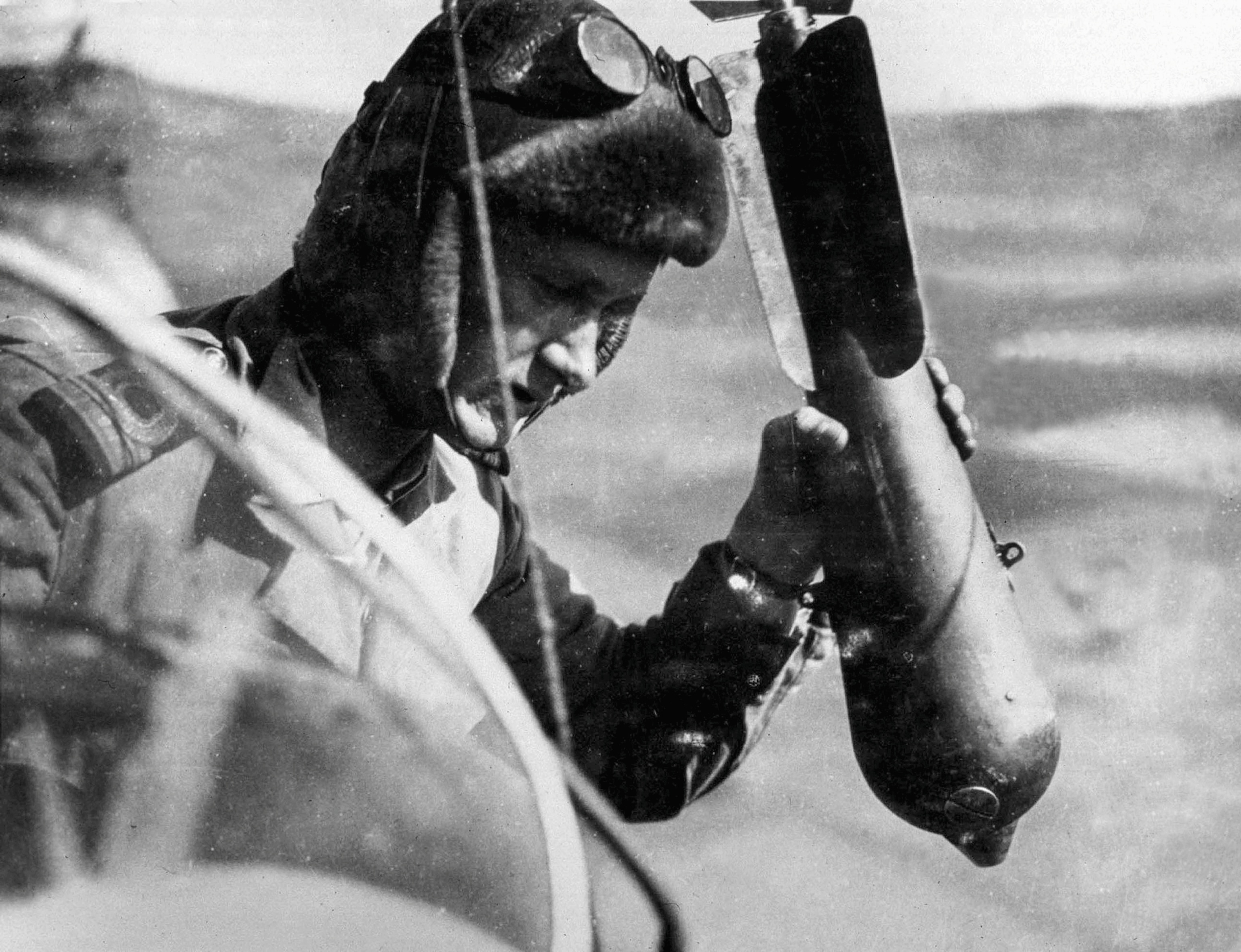
By summer 1916 the British had swelled their personnel to some 42,000, including crews and ground staff. Even so, the German loss of planes and pilots was far lower than that of the Allies, and the German air force was formidably united and disciplined. Boelcke, by then, was commanding one of the Jadgstaffel or specific fighter units (known by their abbreviation, Jasta), whose single-minded goal was to destroy large numbers of enemy craft and tighten Germany’s grip on aerial supremacy. Boelcke embarked on intensive pilot training to keep his squadron, Jasta 2, manned with the best aviators, creating a unified and aggressive team.
In October 1916 Boelcke was killed. The squadron, plunged into grief over the loss of the 25-year-old ace, was renamed Jasta Boelcke in his honor. In January 1917 Manfred von Richthofen, one of his star students, took command of Jasta 11. The squadron was now flying Albatros fighters, which had replaced the Eindeckers. Faster than the Allied planes, these newer models could even carry two machine guns. Richthofen painted his entire plane bright red, which earned him his more famous moniker: the Red Baron. He would become famous for his tactical mind and his lethal accuracy. Following Boelcke’s precepts, he would fly higher than the rest of the formations and lure the enemy into his stunning attacks.
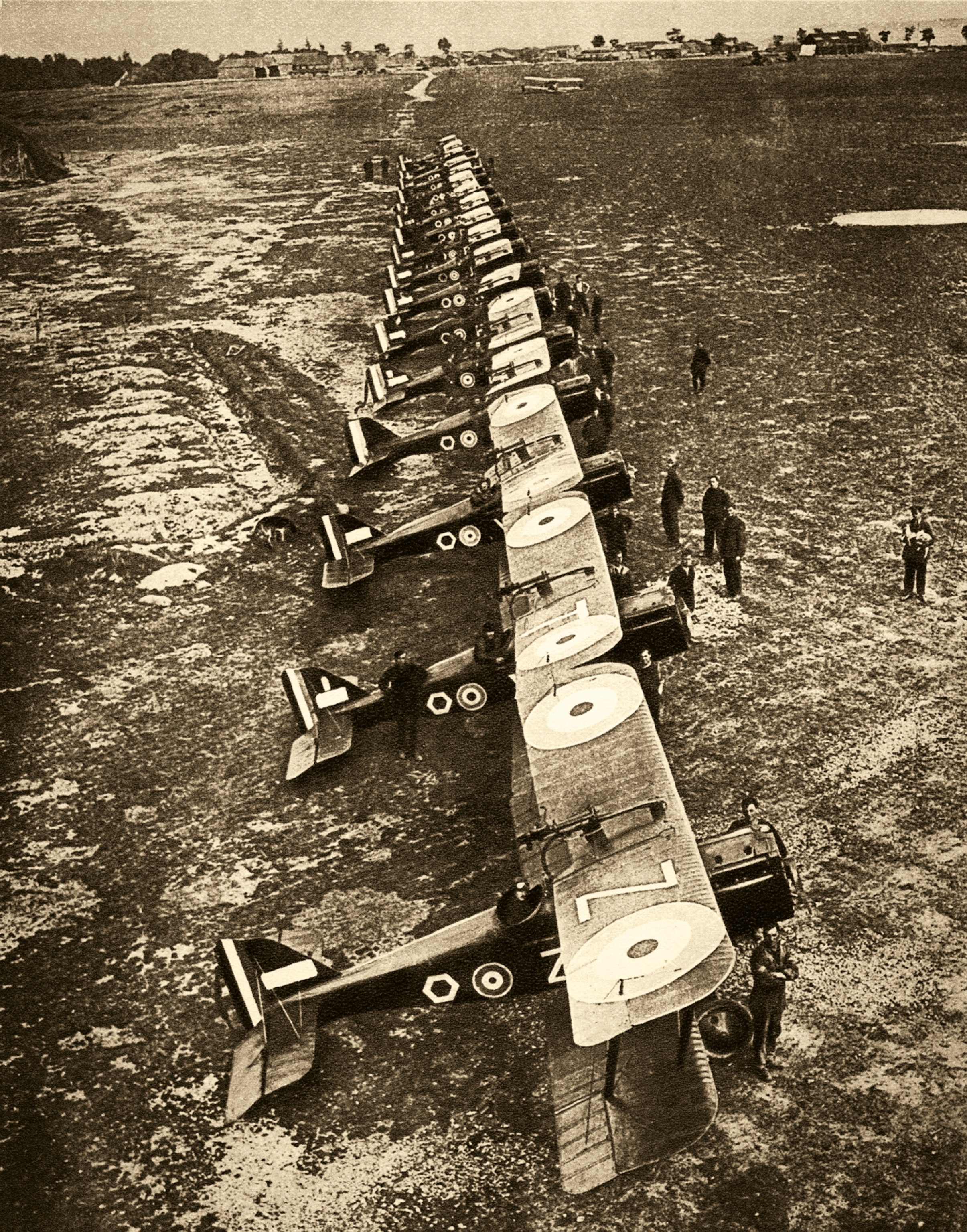
Part of the Boelcke doctrine—integral to German training, and which the British only gradually adopted—was the principal of prudence: Do not get involved in a fight for the sake of playing the hero. As late as 1916, some British aviators regarded this commonsense formula with disdain, as cowardly rather than smart. After being taken prisoner in late 1916, a German aviator, with leisure to observe the fights in the sky, wrote: “You [British] pilots . . . never weigh the situation. I saw one of your machines take on one Fokker, two Fokkers, then three Fokkers, before being shot down at Lille. We do not look for fights unless it’s our duty.”
The prudent, calculated tactics of the Germans meant that when their attack came, it would be devastating. In spring 1917 the Red Baron’s Albatros fighters aggressively attacked British air cover during the Battle of Arras, inflicting huge casualties during what became known as Bloody April.
Although German pilots chose their battles carefully, they were as much a part of the developing cult of the dashing aviator as their French and British counterparts. Glamour, swagger, and heroism became associated with these daring men who not only flew dangerous machines on the cutting edge of technology but also followed a code that harked back to an earlier age of chivalry and honor.
The ace race
To challenge the German Jastas, Allied squadrons also developed their own legendary teams. The Sopwith Triplane, a fast but flawed model, became famous under the piloting of the Black Flight, a Royal Naval Air Service unit manned by five Canadian pilots. The team was named for the decision of its leader, Raymond Collishaw to paint the tri- planes midnight black. Each plane had a different name: Black Maria, Black Rodger, Black Death, Black Sheep, and Black Prince.
Magnificent Men in Their Flying Machines
In desperate need of heroes to distract the reader from the blood and carnage of the battlefield, the press was only too happy to recount the exploits of these new knights of the skies, hailing men like Britain’s Albert Ball, Canada’s Billy Bishop, France’s René Fonck, and—later—the American Edward Rickenbacker. It is said that when French aviator Roland Garros (for whom the grand-slam tennis tournament is named) shot down his third plane, the press hailed him as un as, an ace. The term became common currency among the Allied powers for those pilots who obtained five victories (Garros, in fact, only scored four in the end), and the ace bar was later raised to 10 confirmed victories. (See also: Eddie Rickenbacker's "Enduring Courage.")
Of course, only a few World War I pilots were feted in such a way—regular corps fliers, who risked their lives on a daily basis, passed anonymously into history, many paying the ultimate price. Most aviators, however, enjoyed comforts above the rest of the armed forces. Clean accommodations, soft beds, and plenty of good quality food and alcohol were the norm. But this lifestyle came with a high price. Orders to fly could come at any time. Once airborne, the risk of death for a pilot was significantly higher than that for soldiers fighting in the trenches. By 1917 British squadrons were losing around 200 pilots a month. It is said that a pilot arriving in France after his basic training had a life expectancy of around 11 days.
Finishing the job
The war was growing desperate for Britain and France in 1917. In spring the Russian government fell into chaos as the hardships of war drove the Russian people to revolt, and Tsar Nicholas II abdicated. In the United States, whose people had been reluctant to get involved in a European conflict, public opinion was starting to turn against Germany. German submarines had begun sinking American merchant vessels at sea, causing an outcry among the American people. In April 1917 President Woodrow Wilson was finally able to bring the United States into the fray and pledged “to make the world safe for democracy.” (See also: The United States Enters World War I.)
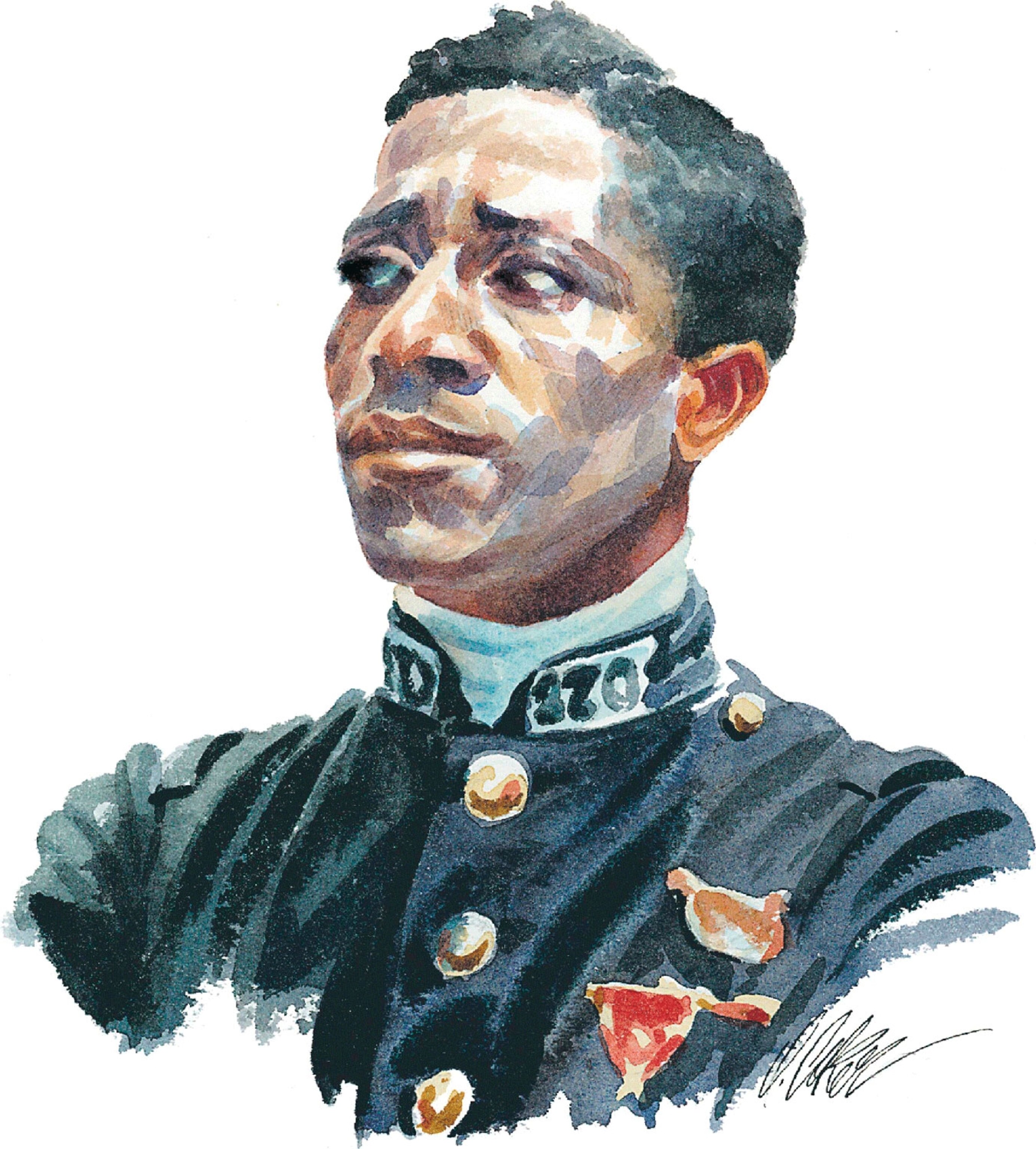
American aviators had already gained battle experience in the war, fighting as volunteers for the French. In April 1916 France had a unit composed entirely of American fliers. Later that year, many American pilots formed the unofficial “Lafayette Squadron,” nicknamed for the French marquis who had fought on the side of the patriots in the American Revolution. The first African-American pilot, Eugene Bullard, fought in France and is said to have had a motto painted onto his plane: “All Blood Runs Red.” Bullard was later refused entry to the newly created U.S. Air Service because of racial segregation.
Faced with a similar situation to that of the European powers in 1914, the United States had little airpower—only six aircraft—when they entered the war in 1917. A recruitment drive followed, new aircraft were ordered, and by May 1918, the U.S. Army Air Service was created. American flying legends rapidly emerged, including the superstar American pilot, Capt. Edward Rickenbacker, and the daring commander Brig. Gen. William “Billy” Mitchell, father of the United States Air Force.
Top Flying Aces of World War I
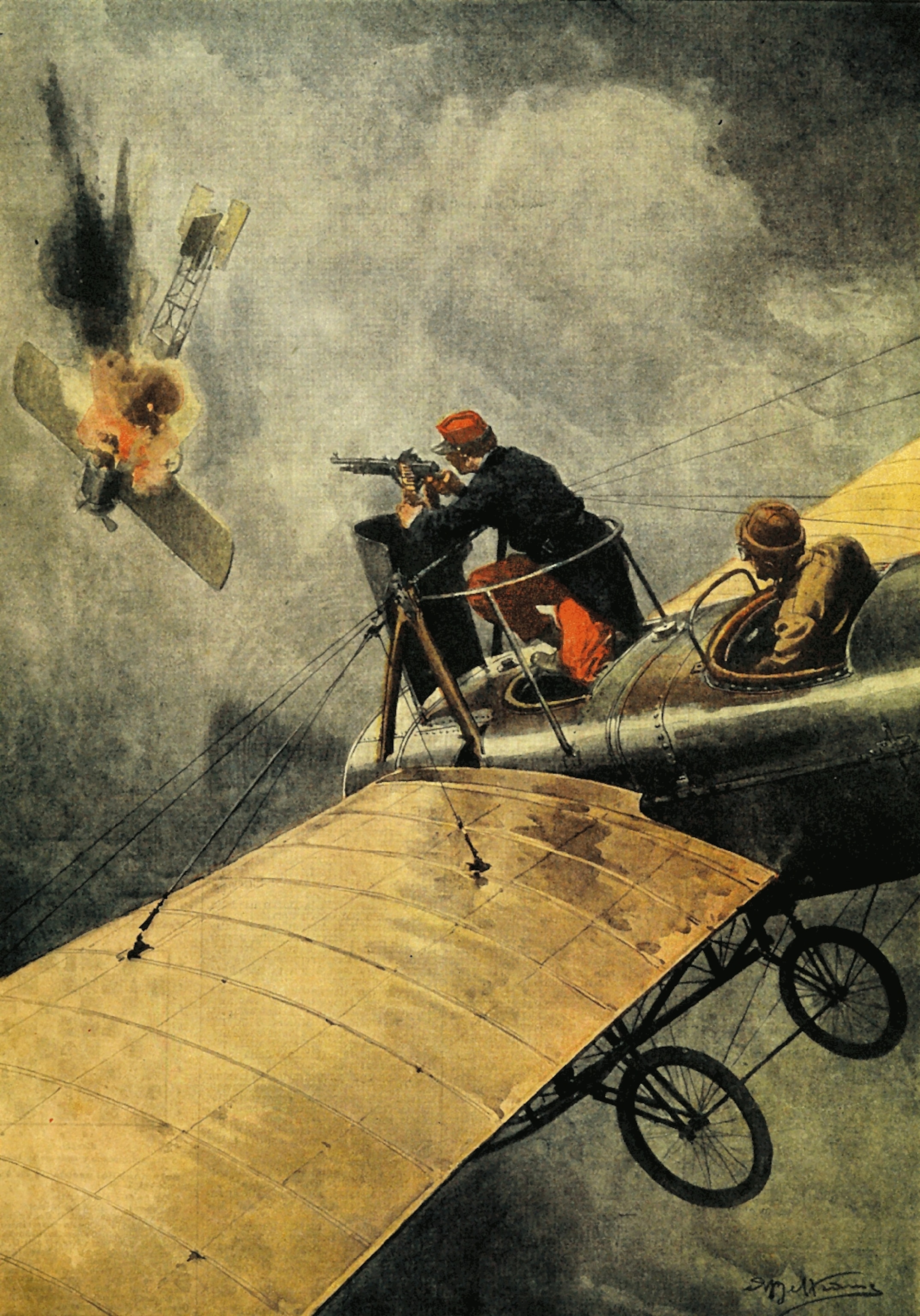
1 Manfred von Richthofen (Germany) 80
2 René Fonck (France) 75
3 Billy Bishop (Canada) 72
4 Edward Mannock (Great Britain) 68
5 Ernst Udet (Germany) 62
6 Raymond Collishaw (Canada) 62
7 James McCudden (Great Britain) 57
8 Donald MacLaren (Canada) 54
9 Andrew Beauchamp-Proctor (S. Africa) 54
10 Georges Guynemer (France) 54
Source: Air Aces, C. Shores (1983)
In the months leading up to the end of the war, Allied superiority in the air had already been established. The Allies were outproducing the Germans in aircraft by approximately five to one. By the last year of the war French Spad XIII biplanes were being mass-produced and proving highly effective against the enemy. The British unveiled their own distinctive aircraft: the Sopwith Camel biplane. Entering the skies in the summer of 1917, the Camel was notoriously hard to handle, but when manned by experienced pilots, it became the scourge of German aviators. Not even the formidable German Fokker D.VII could turn the tide.
A key event came in September 1918 when the Allied forces faced off against Germany in the Battle of Saint-Mihiel. In a highly coordinated attack between ground and air forces, Billy Mitchell commanded the aerial assault for the Allies, who flew nearly 1,500 planes into battle. Mitchell’s strategy—to send relentless wave after wave of planes—devastated German ground forces. The new burst of energy provided by the United States in the air and on the ground had helped tip the scales in the Allies’ favor, and the war would finally come to an end in November 1918.
A conflict whose opening months saw the birth of aerial combat, ended with aircraft capable of speeds and maneuverability that would have stunned prewar aviation amateurs. The 19th-century world order had been torn to shreds. Europe and the world was transformed; old empires—Russian, Austro-Hungarian, and Ottoman—lay in tatters. The dawning American century was also to be the century of the airplane, endowed with ever greater speeds and terrifying firepower.


